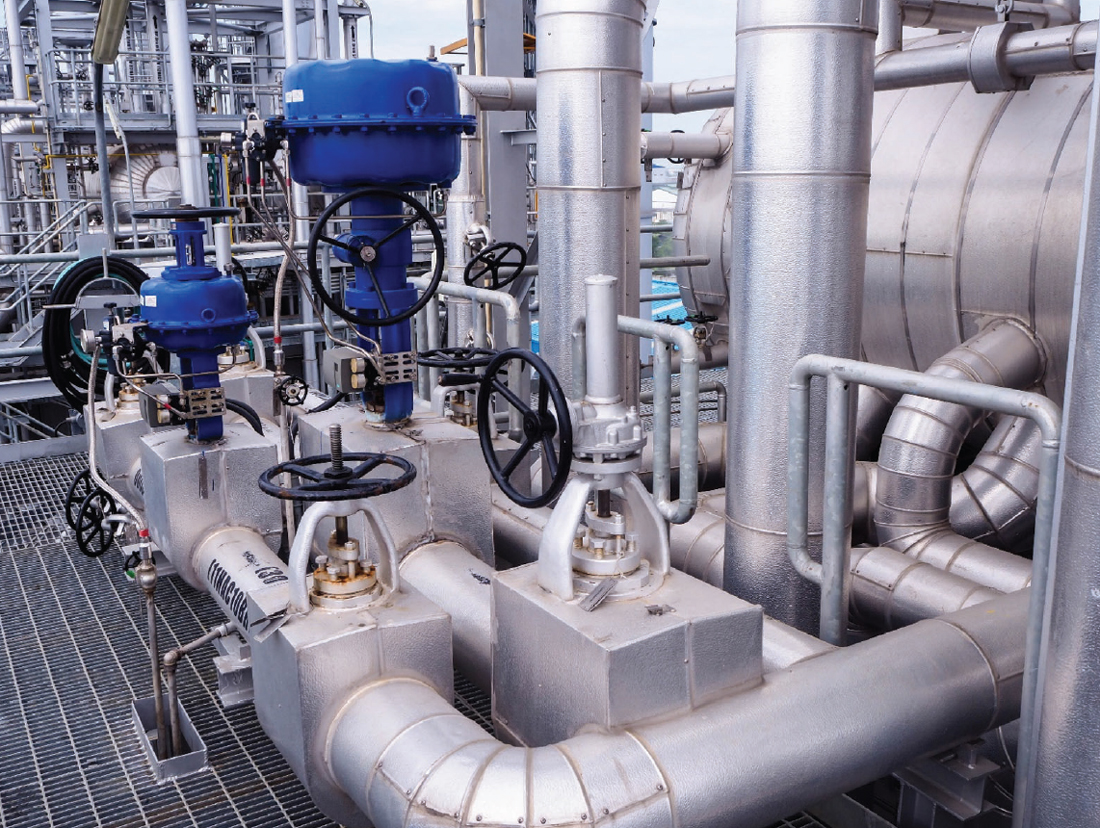Effective Control Valves: Secret Parts for Efficient System Management
Effective Control Valves: Secret Parts for Efficient System Management
Blog Article

Maximize Energy Savings and Convenience With Advanced Structure Automation Controls
In the realm of modern-day architecture and facility monitoring, the combination of advanced structure automation controls stands as a crucial development. By utilizing the power of automation, structures can adapt, respond, and develop in methods that were as soon as unthinkable.
Power Efficiency Conveniences
Power performance advantages can dramatically reduce energy intake and functional expenses in buildings. Energy-efficient systems, such as sophisticated building automation controls, can optimize the usage of sources like air conditioning, lighting, and home heating, leading to lower power expenses over time.
Furthermore, enhanced power efficiency can prolong the lifespan of structure devices and systems. By operating extra efficiently, heating and cooling systems, lighting fixture, and various other building components experience much less deterioration, resulting in lowered upkeep and replacement costs. Furthermore, energy-efficient buildings frequently regulate higher residential property values and rental prices, providing long-term monetary benefits to owners.
In addition, energy efficiency can boost resident convenience and efficiency. Appropriately regulated interior environments with optimal illumination and thermal problems produce an even more favorable and pleasurable workspace, leading to boosted worker complete satisfaction and efficiency. In general, the power efficiency benefits related to advanced building automation controls are complex, encompassing expense financial savings, ecological stewardship, and resident wellness.
Boosted Comfort Control
Enhancing comfort control in building atmospheres needs an innovative combination of innovative automation systems for optimum resident wellness. By using innovative building automation controls, facilities can tailor the indoor atmosphere to meet the details needs and choices of owners. These systems allow specific regulation of air flow, temperature level, and lighting, creating a productive and comfy ambience. Resident fulfillment and efficiency are carefully linked to thermal comfort, making it important to have systems in area that can adjust to altering conditions in real-time.
Enhanced convenience control goes past basic temperature modifications. It consists of attributes such as personalized setups, tenancy sensors, and all-natural light use to produce a dynamic and receptive atmosphere. By incorporating these advanced controls, structures can not only boost convenience but additionally enhance energy efficiency by maximizing system procedures based on real occupancy and use patterns. Eventually, focusing on passenger comfort with innovative automation systems leads to an extra pleasurable and much healthier indoor setting.
Functional Performance Improvements

Moreover, the execution of real-time monitoring and analytics devices enables building drivers to identify power ineffectiveness and functional anomalies immediately. By continuously monitoring energy use patterns and system efficiency metrics, adjustments can be made in real-time to enhance energy usage and make certain peak operational effectiveness. control valves. In addition, incorporating need response approaches right into building automation controls can better enhance functional efficiency by dynamically changing energy usage based upon grid problems and pricing signals
Indoor Climate Optimization
Effective interior climate optimization is a basic facet of structure automation controls, making certain occupants' comfort and wellness while making best use of energy savings. By using sophisticated sensing units and controls, constructing automation systems can continuously change and keep an eye on temperature level, moisture degrees, air top quality, and air flow to produce an optimal indoor environment. Maintaining comfortable and constant problems not just improves passenger satisfaction but additionally increases efficiency and general well-being.
Interior climate optimization find also plays a vital function in energy efficiency. By fine-tuning ventilation, home heating, and air conditioning systems based on real-time data and tenancy patterns, developing automation controls can considerably reduce energy intake - control valves. As an example, executing techniques such as demand-controlled air flow and thermal zoning can assist reduce power waste while making sure that each area of the building obtains the required conditioning.

Lasting Atmosphere Development
Building automation controls not only maximize interior climate conditions for power performance and owner convenience yet additionally lay the structure for producing a sustainable setting via critical monitoring of sources and systems. By incorporating sophisticated building automation innovations, such as sensors, actuators, and smart software program, centers can adjust and monitor power use in real-time to minimize waste and reduce their carbon impact. These systems allow predictive upkeep, determining prospective problems before they intensify and optimizing tools performance to boost durability and efficiency.
In addition, lasting environment production extends beyond energy monitoring to include water preservation, waste decrease, and indoor air high quality improvement. Structure automation controls can regulate water use, find leaks, and make certain appropriate garbage disposal methods, contributing to general sustainability efforts. Furthermore, by keeping an eye on and regulating ventilation and filtering systems, these technologies boost passenger health and efficiency while lowering energy usage related to cooling and heating operations.
Verdict
Finally, advanced building automation regulates offer substantial advantages in terms of energy financial savings, comfort control, functional performance, indoor climate optimization, and developing a sustainable environment. By applying these controls, buildings can accomplish ideal efficiency while reducing power consumption and improving occupant comfort. It is obvious that the usage of sophisticated automation technology is important in improving structure efficiency and developing a much more sustainable future.
Power performance benefits can considerably minimize power usage and operational expenses in structures. On the whole, the power efficiency benefits associated with advanced building automation Recommended Site controls are multifaceted, including expense savings, environmental stewardship, and resident wellness.
In addition, incorporating need feedback approaches right into building automation controls can additionally enhance functional performance by dynamically changing energy use based on grid problems and rates signals.
Building automation controls not just enhance indoor environment problems for energy efficiency and owner comfort but additionally lay the structure for developing a sustainable environment with tactical monitoring of systems and resources.In conclusion, advanced structure automation manages offer significant advantages in terms of energy savings, convenience control, operational effectiveness, indoor environment optimization, and producing a sustainable environment.
Report this page